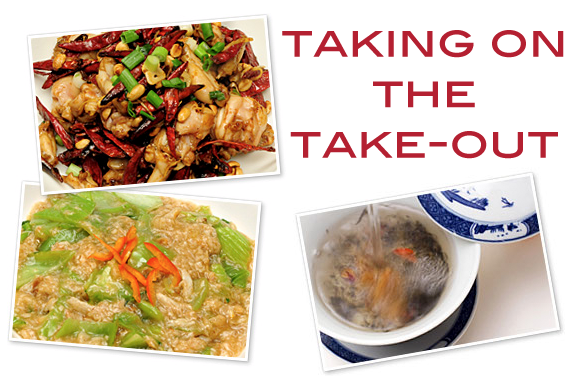I’m not sure why, but I am always shocked and delighted by how ICE’s Asian food cooking classes sneak up on me and become my absolute favorites. Perhaps it’s because I spent some of my formative years in Asia, and so there’s an emotional attachment, or perhaps it’s because many of the recipes take a slew of ingredients that I don’t generally use and therefore will never have room for in my teeny-tiny kitchen. But most likely, my love of ICE’s Asian-themed cooking classes is a result of the vast number of techniques the classes expose me to.
Last week I attended The Complete Chinese Dinner, a recreational cooking class taught by Kian Lam Kho, founder of Redcook.net, a Chinese home cooking blog. Chef Kho also co-wrote Knack Chinese Cooking: A Step-By-Step Guide to Authentic Favorites Made Easy. Chef Kho took our palettes on a culinary tour of Asian cuisine as we simmered, sautéed and sliced our way to a delicious Chinese spread. The evening’s fare included Shrimp Salad with Mustard Mayonnaise (which I have a feeling I will be making a lot of once summer rolls around), Chicken Soup with Young Coconut, Red-Cooked Pork, Shanghai Fried Rice Cake and what turned out to be my absolute favorite, Sweet-and-Sour Watermelon Radish Salad (perhaps I was just smitten because the Chinese name for it is “inner-beauty radish”). Check out the list below for Chef Kho’s most memorable morsels:
It’s all about balance: balance of flavors, balance of ingredients, and a balance of different regions.
Most American Chinese restaurants serve mostly Cantonese food (usually it’s a very heavily modified version of Cantonese). It’s considered one of the most refined of all Chinese cuisines, as Southern China was the first area opened for international-trade and therefore has the richest collaboration of flavors.

Not all stir-frying is created equal! There are actually different types of stir-fry: “dry wok” (which results in no sauce) and “moist” (in which you add stock or water toward the end and thicken the sauce just before serving). The key to good stir-frying is not to put all the ingredients in at once, but rather to cook the meat until it’s about ¾ of the way finished, then remove the meat and cook the vegetables until they are also ¾ of the way finished. At the very end, return the meat to the wok and then season the dish. This technique prevents the meat from getting dry and ensures that your vegetables are thoroughly cooked!
The three staples of Chinese seasoning are ginger, garlic and scallions. Ginger is especially useful in neutralizing the “gamey-ness” of many types of meat. Check out ICE’s recreational website for a full listing of Asian-themed recreational classes and follow ICE (and Chef Kho!) on Twitter.



